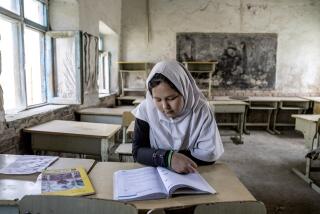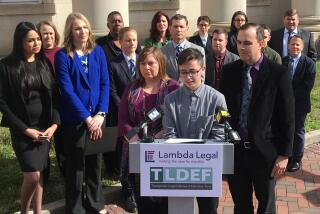What to do about Haiti
Even now, despite the haunting images, the unending tales of loss and broken survival, it is difficult to fathom the scale of devastation in Haiti. The estimated 200,000 dead on half the island of Hispaniola is similar to the toll from South Asia’s tsunami five years ago -- but that was across 14 countries. Haiti’s approximately 1.5 million homeless is nearly quadruple the population of New Orleans before Hurricane Katrina struck. At least two-thirds of Port-au-Prince has been leveled. The country’s capital and its government, quite simply, have been reduced to scree.
If clearing the rubble, burying the dead and tending the wounded were all that confronted the international community in Haiti, it would be an enormous task. But one need only reflect back on the country a day before the magnitude 7.0 earthquake to comprehend the true magnitude of the challenge ahead. Eighty percent of the population lived in poverty, and nearly half was illiterate. Huge swaths of Port-au-Prince had no drinking water, sewage systems or electrical service -- at least not provided by the state. The government often seemed to exist in name only, exercising weak leadership with rampant corruption. Most of those with college educations fled at the first opportunity, depriving the country of an educated bureaucracy and managerial class.
These systemic problems persisted despite the fact that most of the world’s major charitable organizations worked in Haiti, and the country received roughly $2 billion in foreign assistance from the United States alone over the last 20 years. Now, in the aftermath of the earthquake, development experts estimate that Haiti will need that much annually for several years, and continued aid for decades to come.
The international community responded quickly to Haiti’s tragedy. Forty-three rescue crews flew in from around the globe, while U.S. troops arrived to keep order, distribute food and, hopefully, to counter the memory of U.S. occupation with a demonstration of humanitarian relief. Governments pledged nearly $1 billion last week, and more poured in from private donors via telephones and text messages. This is heartening. It is also just a beginning.
Haiti’s myriad demands may be unprecedented, and there is no obvious model to follow for successfully redeveloping the country. International groups have rebuilt infrastructure after natural disasters, as they did in Indonesia following the tsunami. They have helped to establish the rule of law after man-made disasters such as the genocide in Rwanda, and engaged in nation-building, as when they supported Nelson Mandela’s post-apartheid South Africa. But Haiti needs infrastructure, an economic base and a full-functioning government. Besides funding, the country lacks the dynamic leadership and trained workforce necessary to emerge from the rubble and, as former President Clinton proposed, “build back better.”
Naturally the United States must play a leading role in the reconstruction of Haiti, which is only about 700 miles from our shores and culturally connected by more than a million Americans of Haitian descent. That said, the United States alone does not have the capacity to meet Haiti’s needs. Nor should we. Reconstruction must be an international effort with the United Nations, the World Bank and the Inter-American Development Bank at the forefront. All of Haiti’s neighbors, from the Dominican Republic and Mexico to Cuba and Venezuela, have a stake in ensuring stability and preventing an exodus of desperate Haitians. France has colonial ties; Canada has a large Haitian community; and there should be shared responsibility among the rest of the developed nations as well.
Reconstruction must be coordinated and carried out in collaboration with Haitians themselves. In the past, corruption and weak leadership have prompted international organizations to build parallel networks of schools, hospitals and even water projects that then further undermined the role of the state. This time they must find ways to funnel aid through the Haitian government and private sector, but with mechanisms in place to ensure the money is not lost to mismanagement and corruption. Haitians must be empowered to decide what to rebuild and how they want to do it. Should the capital be reconstituted in Port-au-Prince? Is it possible to create viable, self-sustaining villages elsewhere? What is the right mix of agriculture and manufacturing to guarantee the country’s future? Haitians have a right to choose how to spend the aid, and those footing the bill are entitled to demand transparency and accountability. Haitians should be trained to manage the money -- perhaps by hired members of the diaspora -- then held to high standards.
Some people say that Haiti is hopeless -- because it’s cursed, inherently corrupt, or simply because its problems are too great. There are those who argue that the problem extends far beyond Haiti -- that wealthy countries have spent trillions of dollars across the developing world and still have not figured out how to use foreign aid effectively to transform an economy and pull a country out of poverty. Theories on how to do so have been tried, abandoned and recycled. The debate continues between those who advocate massive transformational approaches and those who argue for incremental change.
There are no easy answers for Haiti, but there are certain truths: First, we have a moral obligation to respond to an emergency when people are in need of food, water and shelter. Second, we cannot wall ourselves off from the problems of the rest of the world, and least of all those countries near our shores. We must break the tired pattern of responding to a crisis in Haiti, promising help and then quickly losing interest. Haiti’s needs are long term. Just to match the success of the Dominican Republic on the other half of the island, Haiti needs investment in education, agriculture and industry. Hopefully some of the 200 companies that sent representatives to an Inter-American Development Bank conference with Clinton in October will follow through with investments now. The goal is neither to occupy Haiti nor to turn it into a protectorate of the U.N. It is to help Haiti stand on its own.
More to Read
Start your day right
Sign up for Essential California for news, features and recommendations from the L.A. Times and beyond in your inbox six days a week.
You may occasionally receive promotional content from the Los Angeles Times.






